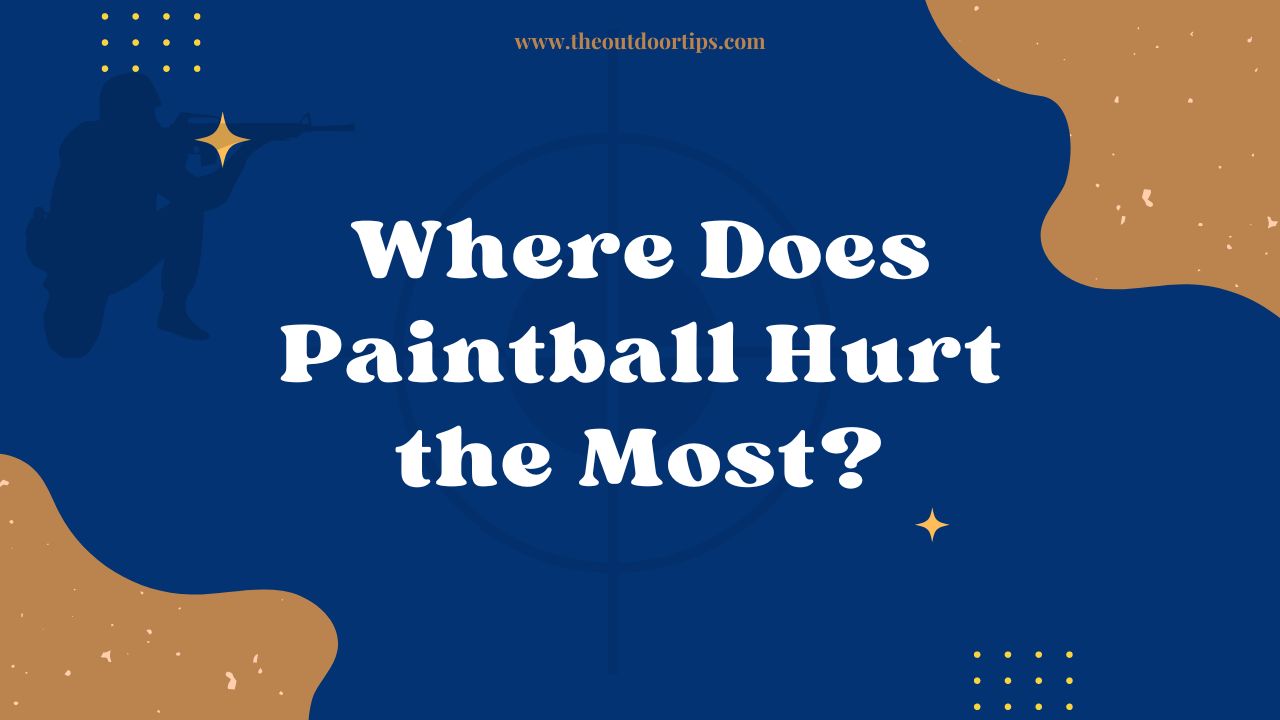Paintball is a thrilling sport that combines strategy, teamwork, and excitement. However, the potential for paintball impacts raises questions about where the hits hurt the most. In this article, we explore the varying levels of pain associated with different impact zones in paintball. By delving into the sensations experienced in various areas, understanding the role of protective gear, and discussing pain management strategies, we aim to provide players with insights for a more comfortable and enjoyable paintball experience.

Where Does Paintball Hurt the Most?
Short Answer: Paintball impacts can hurt more in sensitive areas like the neck, groin, and hands, while hits on padded areas like the torso or back may be less painful. Protective gear, strategic gameplay, and pain management techniques contribute to a more comfortable and enjoyable paintball experience.
Understanding the varying pain levels of different impact zones in paintball helps players anticipate sensations and employ effective protective measures:
1. Sensitive Areas: Neck and Groin
Paintball hits to sensitive areas like the neck and groin tend to be more painful due to the concentration of nerve endings and thinner skin. The neck, being a relatively exposed area, lacks substantial padding, amplifying the impact’s discomfort. The groin area is particularly sensitive and lacks protective padding, making hits here particularly uncomfortable.
2. Hands and Fingers
Hits to the hands and fingers can be quite painful due to the high density of nerve endings and minimal natural protection. Wearing protective gloves is crucial in minimizing the discomfort of hits to these areas.
3. Less Painful Areas: Torso and Back
Paintball impacts to padded areas such as the torso and back are generally less painful due to the presence of muscles and adipose tissue that absorb some of the impact’s force. Wearing padded clothing or vests further reduces the sensation of pain in these regions.
4. Thighs and Upper Arms
Hits to the thighs and upper arms fall in the mid-range of pain sensation. While these areas have some muscle and padding, they lack the sensitivity of the neck or hands. Wearing clothing with a thicker weave can provide additional protection to these areas.
The Role of Protective Gear and Pain Management
1. Protective Gear’s Significance
Wearing proper protective gear significantly reduces the discomfort of paintball impacts. A well-fitted mask protects the face and eyes, while padded clothing, gloves, and sturdy footwear shield vulnerable areas from pain-inducing hits.
2. Strategic Gameplay
Employing strategic gameplay techniques, such as using cover, maintaining communication with teammates, and moving with awareness, minimizes the risk of getting hit in more sensitive areas.
3. Pain Management Strategies
Implementing pain management techniques can enhance the overall paintball experience:
a. Focused Breathing
Deep, focused breathing helps manage pain sensations and promotes relaxation during gameplay.
b. Mindfulness Techniques
Practicing mindfulness techniques can shift the focus away from pain, improving overall comfort and reducing discomfort.
c. Pain Relief Creams
Topical pain relief creams or ointments can be applied to the skin to alleviate discomfort and reduce the sensation of pain from impacts.
d. Hydration and Nutrition
Staying hydrated and maintaining a balanced diet supports the body’s ability to manage discomfort.
Final thoughts:
While paintball impacts can cause discomfort, understanding the varying pain levels in different impact zones allows players to prepare and strategize. Wearing appropriate protective gear, employing strategic tactics, and utilizing pain management techniques contribute to a more comfortable and enjoyable paintball experience.
